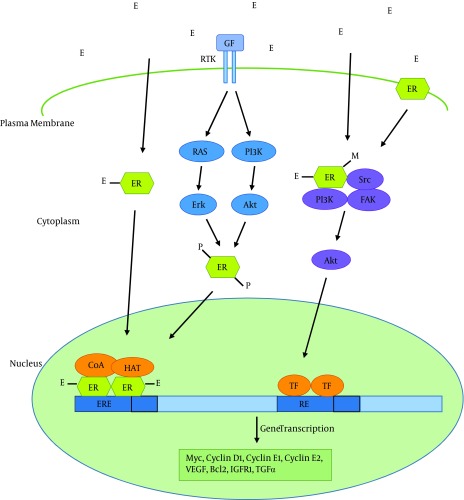Figure 1. Estrogen Signaling Pathway.
Pathways of estrogen regulation of gene expression have been shown. In the classical estrogen signaling, estrogen (E) binds estrogen receptors (ERs), induces dimerization of the protein, and activates gene expression through binding to estrogen response elements (EREs) in the promoter of target genes, in complex with co-activators (CoAs) and histone acetyl transferases (HATs). Activation of signaling events downstream of receptor tyrosine kinases (RTKs) can also lead to ER phosphorylation (P) through Erk or Akt serine/threonine kinases and subsequent ligand-independent activation of ER. Estrogen signaling can also be mediated through non-genomic mechanisms by ER in the cytoplasm or membrane. Ligand binding leads to the formation of functional protein complexes that involve other signaling pathways, resulting in transcription factor (TF) activation. For instance, ligand binding leads to methylation (M) of ER, and subsequent formation of the ER-PI3K-Src-focal adhesion kinase (FAK) complex which activates Akt, and ultimately alters gene expression. GF: Growth factor; RE: Response element; VEGF: Vascular endothelial growth factor; IGFR1: Insulin-like growth factor receptor 1; TGFα: Transforming growth factor α.

